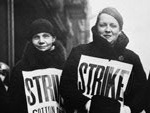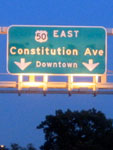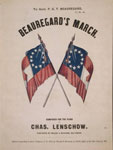One of the issues with which I struggled as a new teacher was the recognition of major themes prevalent in American history. In my first year of teaching I was often more concerned with getting through the next unit, next lesson, even the next class rather than thinking about the bigger picture. And my ignorance of the important themes of history did a disservice to my students. The event-focused history as I taught it failed to reveal connections and humanize the actors of history; it felt irrelevant to most of my students. The content, in fact, was presented as simply a series of inevitable events; each one distinct from the last, never to be considered again as we marched through time. As I became more comfortable in my teaching, I realized the importance of weaving salient themes of history, including race, class, and nationalism, throughout my lessons as a way to make the content more meaningful. Thus, I began the conscious effort of highlighting the manifestations of these themes in history for the benefit of my students. I discovered that the connections we made through class activities based on these themes allowed my students to see relationships within the content and gain a deeper understanding of the material.
Class Matters
The theme of class in America was one with which I felt a particularly deep connection, and as such, it became a thread that bound many of my American history lessons and units. Class issues and class conflict imbue nearly every event in American history. Of course, class was a significant concern as the Founding Fathers developed the framework that became our nation. And class issues are important to those studying the workers of the Industrial Revolution and the soldiers of the Civil War. And from there, class has become arguably even more important to our history. During the Gilded Age and the Progressive period, labor issues were rooted firmly in class. This theme continued through the 1930s, during which time most conflict in American society concerned clear class questions. And since the 1970s inflationary pressures and the struggles of the middle class have often been topics of historians, economists, and pundits. Today, we often hear about issues related to the economic crisis, class disparities, and the effects on the middle and lower class. To adapt an expression from professor and philosopher Cornell West—in all circumstances of history, class matters.
Understanding Class Through Song
As I have suggested in previous posts, using music to engage, inform, and otherwise foster meaningful learning has worked well for my students and me. Within the theme of class in particular, a rich bounty of songs exists and can provide that fundamental thread through which the theme of class can connect with many periods in history. Songs about class give voice to those we rarely listen to or read about in our textbooks, but can be a component of instruction important to historical understanding.
In early American history students and I listened to Yankee Doodle Dandy and assessed the class differences emerging between the colonists and the British. We reviewed class conflict and the emergence of technology during the Industrial Revolution through contemporary sources including Radiohead’s haunting Palo Alto in an effort to tease out some of the feelings of those fearful of what kind of life new technology would bring and the associated loss of jobs for craftspeople in the 19th century. Antebellum period songwriters including Stephen Collins Foster and Daniel Decatur Emmett provided glimpses into the lives of working-class people of the U.S. as we approached the Civil War.
Teachers can use the medium of music from various genres as a means to address class and class issues in a culturally significant way.
But for me it was music from the labor movement of the late 19th and early 20th centuries, which allowed me to deeply explore the theme of class in American history. Images depicting working conditions and songs written about the plight of the working class as they voiced their frustration and anger toward employers spoke to my students beyond the textbook. Folk musicians from Woody Guthrie, Phil Ochs, and Pete Seeger to Bob Dylan, Bruce Springsteen, and the band Bright Eyes have expressed some of these sentiments and I employed them generously. Bluegrass and country artists including Bill Monroe, Hank Williams, and Earl Scruggs also shared stories of the working class and the rural poor in their songs. And beyond the labor movement specifically, music from urban streets has voiced how not only race but class issues have contributed to the struggle toward equality. Artists including Gil Scott-Heron Public Enemy, Mos Def, Talib Kweli, and Common have all confronted class issues. Moreover, the genre of punk rock largely emerged from working-class ethos and often provides the voice for class struggles as viewed by youth culture. Teachers can use the medium of music from various genres as a means to address class and class issues in a culturally significant way.
Teaching history as more than a series of inevitable events is elemental to quality instruction. Providing opportunities for students to understand the enduring themes that are often left out of traditional, event-focused history can be a way to challenge those myopic narratives. And music focused on the theme of class seems especially prevalent and potent as a way with which to transcend history lessons that are disconnected and irrelevant to students. It is music that is accessible, relevant, and has the ability to engage and inform your students in ways they are not likely to forget.







